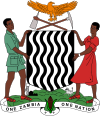Related Research Articles
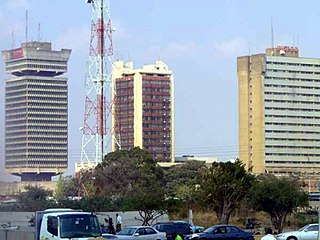
Zambia is a developing country and it achieved middle-income status in 2011. Through the first decade of the 21st century, the economy of Zambia was one of the fastest growing economies in Africa and its capital, Lusaka the fastest growing city in the Southern African Development Community (SADC). Zambia's economic performance has stalled in recent years due to declining copper prices, significant fiscal deficits, and energy shortages.
This article is about the transport in Zambia.
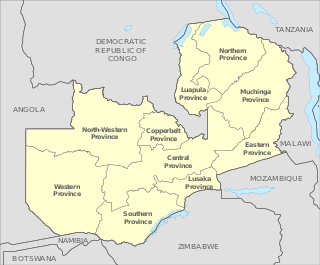
Zambia is divided into 10 provinces for administrative purposes. Each province is headed by a minister appointed by the President and there are ministries of central government for each province. The administrative head of each province is the Permanent Secretary, appointed by the President. There are Deputy Permanent Secretary, heads of government departments and civil servants at the provincial level.

Chingola is a city in Zambia's Copperbelt Province, the country's copper-mining region, with a population of 216,626. It is the home of Nchanga Copper Mine, a deep-shaft high-grade content copper mining operation, which subsequently led to the development of two open pit operations, Chingola Open Pit and then Nchanga Open Pit.

The United Party for National Development (UPND) is a social liberal political party in Zambia, led by Hakainde Hichilema, the current president of the country. The party is an observer member of the Africa Liberal Network.
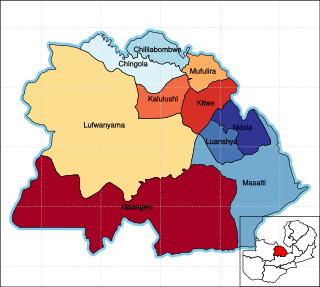
Copperbelt Province is a province in Zambia which covers the mineral-rich Copperbelt, and farming and bush areas to the south. It was the backbone of the Northern Rhodesian economy during British colonial rule and fuelled the hopes of the immediate post-independence period, but its economic importance was severely damaged by a crash in global copper prices in 1973. The province adjoins the Haut-Katanga province of the Democratic Republic of the Congo, which is similarly mineral-rich.

Kitwe is the third largest city in terms of infrastructure development and second largest city in terms of size and population in Zambia. With a population of 517,543 Kitwe is one of the most developed commercial and industrial areas in the nation, alongside Ndola and Lusaka. It has a complex of mines on its north-western and western edges.

The ten provinces of Zambia are divided into a total of 116 districts as of 2018.
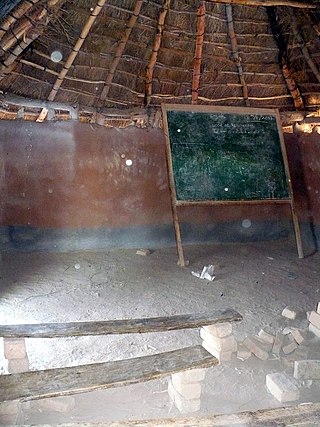
Lower education in Zambia is divided into three levels and these are namely: primary, junior secondary and upper secondary. Higher education in Zambia has improved in the recent years due to the increase of private universities and colleges. The biggest university is the public University of Zambia which is located in the capital city of Lusaka along the great east road and hosts a number of local and international students. The Copperbelt University is the second largest public university and is located in the Copperbelt province of Zambia in Kitwe, and the youngest public university is Mulungushi University, with its main campus 26 km north of Kabwe. There are many other smaller universities, both public and private including the following: Texila American University, Zambia Open University, European University Zambia Zambia Catholic University, Cavendish University, Zambia Adventist University, Northrise University, University of Lusaka, Lusaka Apex Medical University, Woodlands University College, Copperstone University College, University of Barotseland, University of Africa, Information and Communication University, Kwame Nkrumah University of Education, Chalimbana University, Rusangu University, Robert Makasa University, Zambia Centre of Accountancy Studies and there are various Health training Institutes offering Diplomas in clinical medicine Registered Nursing

The following outline is provided as an overview of and topical guide to Zambia:
Zambia, officially known as the Republic of Zambia, is a landlocked country in Southern Africa. The neighbouring countries are the Democratic Republic of the Congo to the north, Tanzania to the north-east, Malawi to the east, Mozambique, Zimbabwe, Botswana, and Namibia to the south, and Angola to the west. The capital city is Lusaka, located in the southeast of the country. The population is concentrated mainly around the capital and the Copperbelt to the northwest.
Rugby union in Zambia is a minor but growing sport. The Zambia national rugby union team is currently ranked 67th by World Rugby. The Zambia Rugby Football Union has 9880 registered players and three formally organised clubs.

Lusaka is the capital and largest city of Zambia. It is one of the fastest-developing cities in southern Africa. Lusaka is in the southern part of the central plateau at an elevation of about 1,279 metres (4,196 ft). As of 2019, the city's population was about 3.3 million, while the urban population is estimated at 2.5 million in 2018. Lusaka is the centre of both commerce and government in Zambia and connects to the country's four main highways heading north, south, east and west. English is the official language of the city administration, while Bemba, Tonga, Lenje, Soli, Lozi and Nyanja are the commonly spoken street languages.
The mining landscape in Zambia covers production of multiple mineral raw materials, including copper, cobalt, gold, nickel, manganese, emeralds, beryllium, myriad gemstones, sulfur, zinc, coal, iron ore, steel, limestone, uranium and other platinum-group metals. Mining has long been a significant primary sector industry and contributor to the Zambian economy by providing export income, royalty payments and employment.
Zambia is a landlocked country in Sub Saharan Africa which experiences a burden of both communicable and non-communicable diseases. In line with WHO agenda for equity in health, it has adopted the Universal Health Coverage agenda to mitigate the challenges faced within the health sector. The Ministry of Health (MOH) provides information pertaining to Zambian health. The main focus of the Ministry of Health has been provision of uninterrupted care with emphasis on health systems strengthening and services via the primary health care approach.
Mwandi is a small town on the Zambezi in the district of the same name of the Western Province in Zambia. The town is 120 km west of Livingstone, on the M10 Road to Sesheke. The village is part of the region known as Barotseland. The town is the seat of a parliamentary constituency of the same name.

Brenda Muntemba was a Zambian diplomat who was serving as the Zambian High Commissioner to Kenya at the time of her death. She had also served as the Commissioner of Police, Southern Province and Chief Program Officer at UNESCO in Zambia. She was a school teacher between 1993 and 1995 at Leopards Hill High School and was also a part-time radio presenter for Radio Phoenix and Christian Voice. Muntemba authored and published four motivational books, under Langmead and Baker; OFF DUTY (2011) In Retrospect (2013), Secrets Unveiled (2015) and The Architect (2018).

The T2 is a trunk road in Zambia. The road runs from the Tunduma border with Tanzania via Mpika, Kabwe and Lusaka to the Chirundu border with Zimbabwe. The road is the longest route of the country, as it is approximately 1,155 kilometres (718 mi). The entire route is a toll road.
The FAZ Women Super Division is the highest league of women’s football in Zambia. It was established in the beginning of 2021 and is run by FAZ. The inaugural season features 12 teams from four provinces in Zambia. The super division replaced the 4 regional women's leagues as the highest level of women’s football in Zambia, while the regional leagues dropped to the second tier.
References
- ↑ "Health expenditure, public (% of GDP) - Data".
- ↑ "Ministry of Health". moh.gov.zm. Retrieved 5 Sep 2015.
- ↑ Forecast provided by International Futures. Historic data points from the World Bank.
- 1 2 "Zambia Country Report" (PDF). www.rad-aid.org. Retrieved 6 September 2015.[ permanent dead link ]
- 1 2 3 "The 2010 health facilities in Zambia" (PDF). www.moh.zm. Retrieved 3 September 2015.[ permanent dead link ]
- 1 2 "Ministry of Health". www.moh.zm. Archived from the original on 28 July 2015. Retrieved 3 September 2015.
- ↑ David Smith in Lusaka (29 April 2013). "Chinese hospital heals sore spot in Zambia | Global development". theguardian.com. Retrieved 2014-04-11.
- ↑ Tycoon powers hospital in a remote area of north-west Zambia Archived 2016-01-31 at the Wayback Machine . ukzambians.co.uk. 11 September 2007
- ↑ "Topic&event=www.jica.go.jp" . Retrieved 6 Sep 2015.
- ↑ David Smith in Lusaka (29 April 2013). "Chinese hospital heals sore spot in Zambia - Global development". theguardian.com. Retrieved 11 April 2014.
- ↑ Tycoon powers hospital in a remote area of north-west Zambia Archived 2016-01-31 at the Wayback Machine . ukzambians.co.uk. 11 September 2007
- ↑ "The University Teaching Hospital". www.uth.gov.zm. Retrieved 2021-04-27.
